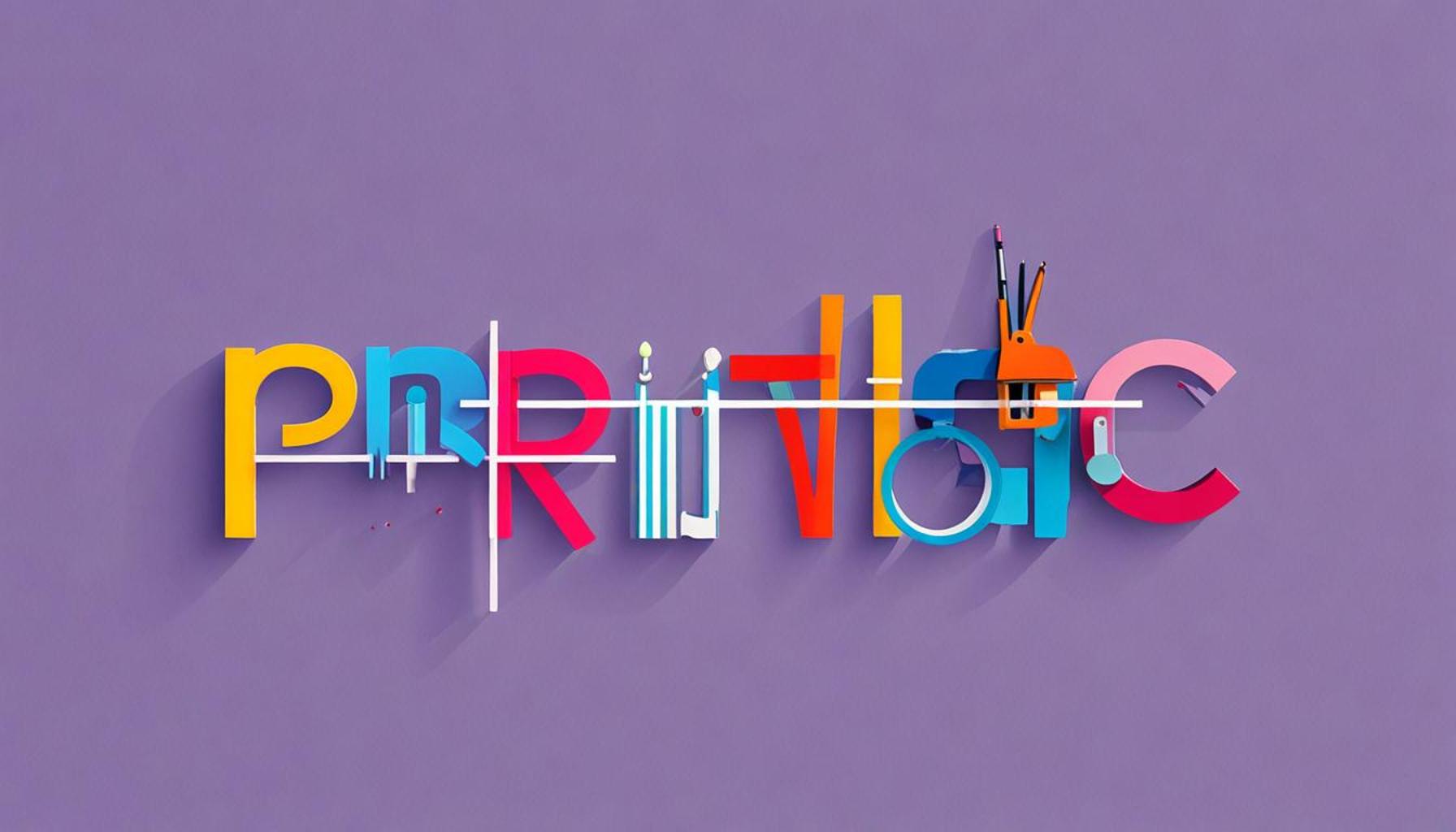Less is More: Strategically Reducing Tasks to Increase Productivity

Unlocking Productivity Through Simplicity
In the fast-paced world we inhabit, the principle of less is more often emerges as a beacon of clarity amidst the clutter of deadlines, meetings, and a relentless stream of emails. By adopting a minimalist mindset, individuals and teams can cultivate not only a tranquil working atmosphere but also significantly boost their productivity. This approach involves a deliberate focus on reducing the number of tasks and distractions, enabling a concentrated effort on what truly matters.
One of the most compelling reasons to embrace simplicity is clarity. When we reduce the number of concurrent tasks, we sharpen our focus on our core objectives. For example, a marketing team that narrows its campaign efforts to a single project rather than juggling several can develop a more cohesive strategy that leads to a more compelling and effective message. By concentrating resources on fewer initiatives, alignment among team members increases, resulting in a stronger overall performance.
Furthermore, simplicity drives efficiency. When activities are streamlined, individuals find themselves completing tasks more quickly and with greater ease. For instance, consider the impact of automation tools that eliminate repetitive administrative work. By investing time in refining processes and using technology to handle mundane tasks, employees can redirect their efforts toward creative solutions and innovation, significantly impacting productivity levels across the board.
In addition to the tangible benefits mentioned, one of the most profound effects of a simpler workload is the reduction of stress. A lighter task list can significantly decrease feelings of being overwhelmed, creating a more enjoyable work environment. Studies indicate that employees with reduced workloads report higher job satisfaction and lower rates of burnout, allowing for a more vibrant and motivated workforce. In this regard, companies prioritizing mental well-being often observe increased engagement and productivity, clearly linking employee morale to overall output.
As businesses strive for high performance, the value of task reduction becomes increasingly evident. Agile methodologies, which emphasize incremental progress and the importance of focusing on fewer projects simultaneously, serve as prime examples of how industry leaders are integrating this strategy into their operational frameworks. Many organizations engaged in Agile practices note a direct correlation between a streamlined project load and improved outcomes, showcasing the effectiveness of this method in action.
Crucially, this transition is rooted in research that indicates multitasking can hinder rather than enhance productivity. A study published in the journal Psychological Science revealed that frequent task-switching can lead to a drop in productivity of up to 40%. With these insights, it’s clear that organizations and individuals must reevaluate their work habits to foster environments where focus and simplicity thrive.
In the following sections, readers will uncover actionable steps and evidence-based strategies that can facilitate the embrace of a simpler work ethic. This journey promises not only to enhance personal output but also to pave the way for collective success in any professional realm.
DISCOVER MORE: Click here to learn about the psychological benefits of decluttering</
The Power of Focus: Streamlining for Success
To effectively harness the principle of less is more, one must first understand the significance of prioritization. The modern workplace is teeming with options, responsibilities, and distractions, often leading to a culture of busyness rather than productivity. Identifying which tasks truly drive results is essential. By creating a clear hierarchy of tasks, individuals can focus on what genuinely matters, leading to enhanced performance and fulfillment.
Implementing a structured approach to prioritize tasks might include the following steps:
- Identify Key Goals: What outcomes are paramount for success this quarter?
- Assess Urgency vs. Importance: Using a matrix can help categorize tasks to determine what needs immediate attention.
- Limit Your To-Do List: Aim for a daily target of three to five critical tasks to concentrate your efforts.
Taking a close examination of tasks enables professionals to discern between what is essential and what is superfluous. Businesses that undertake this evaluation can better align resources, from personnel to financial investments, maximizing opportunities for impactful results. A finance department inundated with numerous reports might find that focusing on key financial indicators not only enhances decision-making but also fosters a culture of accountability among staff.
Moreover, prioritization is intrinsically linked to time management. The theory of the 80/20 rule, also known as Pareto Principle, illustrates that approximately 80% of outcomes stem from 20% of efforts. For instance, a sales team may discover that 20% of their clients account for the majority of revenue. Understanding this dynamic encourages targeted efforts and resource allocation, thereby magnifying overall productivity while minimizing wasted effort.
Yet, while prioritization and time management are vital, they must be complemented by an emphasis on elimination. This entails questioning the necessity of each task on one’s agenda. Are they contributing to the greater good, or are they merely perpetuating a sense of busyness? Consider the value of conducting a regular review of ongoing projects. This exercise can reveal any duplicative efforts or outdated initiatives that can be eliminated altogether. A tech startup, for instance, might discover that several team members are working on similar developments; consolidating these efforts can lead to increased innovation and efficiency.
Lastly, embracing a culture that fosters feedback and reflection can significantly contribute to the reduction of unnecessary tasks. By encouraging dialogue around workload management, teams can share insights into what works and what hinders productivity. Regular check-ins on project statuses allow individuals to recalibrate their efforts, ensuring that the team remains focused on only the most impactful initiatives.
For organizations eager to cultivate a high-performing work environment, the initial step lies in the dedicated effort to streamline tasks. The benefits are clear: with a rigorous focus on prioritization and elimination of the non-essential, companies can unlock a path to a more productive and engaged workforce.
| Advantage | Explanation |
|---|---|
| Enhanced Focus | Reducing the number of tasks allows individuals to concentrate better, leading to improved outcomes and deeper engagement. |
| Greater Efficiency | Streamlined workflows minimize time spent switching between tasks, thus accelerating project completion and productivity levels. |
| Reduced Stress | Limiting tasks can alleviate the overwhelm commonly associated with multitasking, enhancing overall mental well-being. |
| Improved Quality | Fewer tasks allow for a more thorough approach to each, resulting in higher quality deliverables. |
Exploring the concept of “Less is More: Strategically Reducing Tasks to Increase Productivity” unveils numerous advantages that can profoundly impact individual and team performance. The idea is simple yet powerful: addressing fewer tasks at once can dramatically enhance efficiency and effectiveness. When enhanced focus is achieved through task reduction, workers can not only engage more deeply with their priorities but also drive valuable results. Efficiency is equally bolstered, as team members experience less time wasted on transitions between responsibilities. Moreover, reduced stress levels can lead to improved job satisfaction and overall mental well-being. By embracing this minimalist approach, organizations can expect a noticeable increase in the quality of work delivered, as attention is devoted entirely to key objectives.Analyzing these aspects of productivity-enhancing strategies can unlock new pathways for professional success.
DISCOVER MORE: Click here for expert tips on organizing your home together as a family</
The Ripple Effect of Saying No: Embracing Strategic Refusal
In the pursuit of increased productivity, the ability to say no plays a pivotal role. Often, professionals feel pressured to accept additional responsibilities under the guise of collaboration or team spirit, which can dilute their focus on primary objectives. Embracing a mindset that values selective commitment can make a significant impact. By understanding that not every project or task deserves your time, individuals can allocate their energy toward endeavors that align with their core goals.
An effective strategy is to adopt the Four D’s of Time Management: Delete, Delegate, Diminish, and Do. This framework encourages individuals to critically evaluate their commitments:
- Delete: Identify and remove low-value tasks that do not serve any major purpose.
- Delegate: Entrust tasks that others can manage or excel at, freeing up your time for high-priority projects.
- Diminish: Reduce the scope of certain responsibilities where a full commitment may not be necessary, without compromising overall quality.
- Do: Focus on what only you can accomplish, ensuring that you direct your full capabilities where they matter most.
This strategic refusal not only preserves time and mental capacity but also establishes a culture where team members feel empowered to streamline their own work. Psychological research suggests that clarity of focus can enhance cognitive function, leading to better decision-making and ultimately, improved outcomes. A manager at a fast-paced marketing agency, for instance, might implement these four D’s, resulting in increased creative output from team members previously bogged down by unnecessary reports and meetings.
Leveraging Technology to Minimize Workload
Another dimension of the less is more philosophy is optimizing the use of technology to support task reduction. Increasingly, organizations are utilizing project management software and automation tools to streamline operations. For example, platforms like Trello and Asana can help teams visualize their workload, ensuring transparency on what needs to be done while making it easier to spot and eliminate redundant tasks.
Moreover, automation can free professionals from mundane duties that do not require human intervention. For instance, automating email responses or utilizing chatbots for routine customer service inquiries can significantly reduce daily task lists without compromising service quality. This transition not only leads to higher efficiency but also allows employees to concentrate on strategic and creative aspects of their roles that drive growth.
Creating an Environment for Continuous Improvement
To truly harness the power of reduction in workload, a culture of continuous improvement within the organization is essential. This environment encourages employees to regularly assess their productivity practices, engage in constructive feedback loops, and adapt processes as necessary. Organizations that promote this culture may find that employees are more willing to express concerns about overwhelming workloads or outdated procedures, leading to more productive strategies.
According to a study by Harvard Business Review, companies that foster a culture of continuous feedback and learning saw a 22% increase in employee performance. Maintaining open lines of communication may result in not only task reduction but also enhanced morale and job satisfaction, which is equally crucial for sustained productivity growth.
By systematically reducing tasks and creating an atmosphere that embraces strategic refusal, technological integration, and continuous improvement, businesses can capitalize on the less is more approach. This evolution not only streamlines operations but ultimately unlocks the true potential of a workforce ready to excel.
DIVE DEEPER: Click here to discover eco-friendly techniques
Embracing Simplicity for Sustainable Success
In conclusion, the principle of less is more offers a transformative pathway for organizations seeking to boost productivity while reducing employee burnout. By strategically reducing tasks, professionals can focus on what truly matters, ultimately enhancing both individual and team performance. The adoption of the Four D’s of Time Management—Delete, Delegate, Diminish, and Do—empowers individuals to reevaluate their workloads, prioritize effectively, and align their efforts with core objectives.
With the integration of technology, the potential for task reduction is amplified. Utilizing project management tools and automation can significantly streamline operations, allowing teams to invest their time in more valuable, creative pursuits. Additionally, fostering an environment of continuous improvement cultivates a culture where feedback is welcomed, leading to ongoing assessments of productivity practices and the identification of inefficiencies.
As organizations pivot towards embracing these strategies, the impact is clear; enhanced morale, increased engagement, and overall job satisfaction are within reach. Studies have demonstrated that companies that prioritize effective task management see an uptick in employee performance, reiterating the importance of a focused approach to productivity. In a world where multitasking is often celebrated, the real success lies in simplifying our commitments and allowing professionals to harness their full potential. Therefore, as we strive for excellence, let us remember that sometimes, by doing less, we can achieve so much more.


